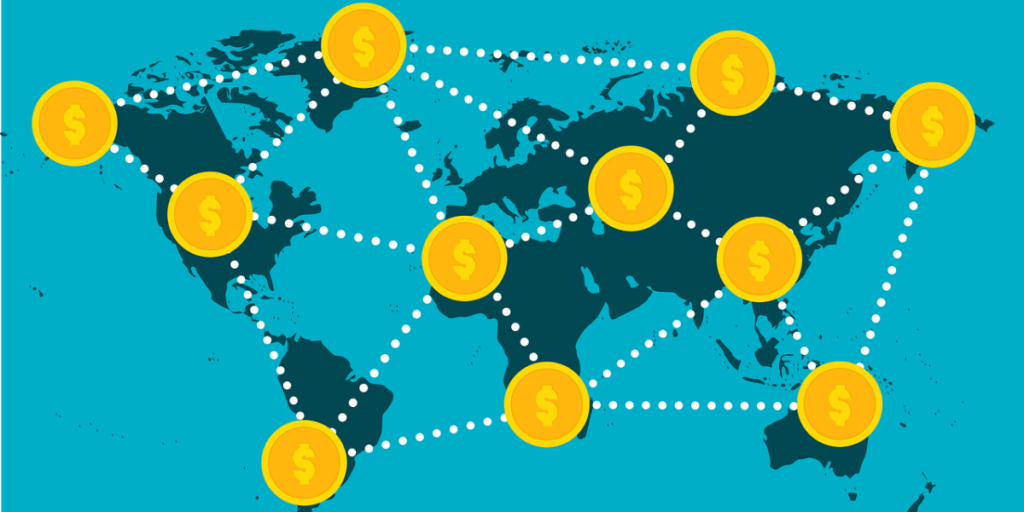- +212 611-650826
- contat@r-berroho.com
- 9704 Ziegler Ave Las Vegas , NV 89148. USA

Introduction
Transfer pricing has evolved as the focal point for tax authorities worldwide because of their ardent measures to ensure that multinational enterprises (MNEs) accurately report their income and allocate profits according to the arm’s length principle.
Morocco has entered into numerous DTAs previously, but it was not until 2021 that Morocco introduced transfer pricing regulations in its General Tax Code (Code Général des Impôts, CGI). Morocco has practically signalled to the world its intention to align its regulations with international tax standards and commitments to the OECD Base Erosion and Profit Shifting (BEPS) framework.[1]
The goal of the abovementioned laws and regulations is to ensure fair taxation of cross-border transactions involving related entities. Nevertheless, compliance with these provisions poses countless challenges for MNEs and medium-sized enterprises due to the complexity of documentation requirements and the risk of disputes with tax authorities. This article discusses the legal framework, practical opportunities, and constant challenges of transfer pricing in Morocco, underscoring the necessity for expert legal and tax guidance.
Legal Framework Governing Transfer Pricing in Morocco
1. Overview of Transfer Pricing Provisions in the General Tax Code (CGI)

In 2021, Morocco codified its transfer pricing rules under Article 214 of the CGI. These provisions instruct taxpayers engaged in cross-border intra-company transactions to maintain proper documentation that can demonstrate compliance with the arm’s length principle. Henceforth, the taxpayer must provide functional analyses, comparability studies, and pricing methodologies upon request by the tax authority (Direction Générale des Impôts, DGI), which notes that:
“Taxpayers must establish that the conditions applied in related-party transactions are consistent with those that would have been agreed upon between independent entities under similar circumstances.”[2]
2. Alignment with OECD Guidelines and BEPS
Moroccan transfer pricing regulations are closely aligned with the OECD Guidelines, focusing on documentation, comparability, and profit allocation. As a participant in the OECD Inclusive Framework on Base Erosion and Profit Shifting (BEPS), Morocco has adopted Action 13, which requires that multinational enterprises (MNEs) prepare Country-by-Country (CbC) Reports, Master Files, and Local Files once they meet specific revenue thresholds.[3] Particularly, MNEs with consolidated group revenue exceeding MAD 750 million are required to prepare and submit these reports,[4] reflecting Morocco’s commitment to international standards for transparency and anti-tax avoidance measures.
Morocco has revealed its dedication to fighting base erosion by adopting the OECD BEPS measures and ensuring that profits are taxed where economic activities occur.
Opportunities for MNEs and Investors
1. Tax Certainty and Risk Mitigation
The clearness of the Moroccan transfer pricing framework offers multinational enterprises (MNEs) the opportunity to reduce the risk of audits and disputes once they maintain comprehensive documentation. Adhering to the arm’s length principle and staying in line with OECD standards can enhance transparency and improve relations with tax authorities. The OECD highlights that: “Proactively complying with transfer pricing documentation reduces the likelihood of disputes and fosters trust between taxpayers and tax authorities.”[5]
2. Investment Incentives and Double Taxation Treaties
Morocco has entered into a vast network of double taxation treaties (DTAs) with over 50 countries. These treaties are useful tools to help multinational enterprises (MNEs) avoid double taxation and provide indispensable mechanisms for resolving disputes through mutual agreement procedures (MAPs). The Ministry of Economy and Finance in Morocco illustrates that “DTAs are essential in facilitating cross-border investments by reducing the risks of double taxation and ensuring effective dispute resolution mechanisms.”[6]
Challenges in Transfer Pricing Compliance
1. Documentation and Compliance Burdens
The need to prepare transfer pricing documentation that satisfies the DGI’s requirements is just one of the major challenges facing the MNEs. The conditions to conduct functional analyses, economic studies, and comparability adjustments require substantial resources and expertise. The code stipulates that
“Failure to provide accurate and contemporaneous documentation may result in tax adjustments, penalties, and reputational damage.”[7]
2. Disputes Over Comparables
In Morocco, a common recurring challenge lies in Determining reliable comparables for benchmarking purposes. The analysis of comparability is often complicated due to the differences in market conditions, product characteristics, and geographic factors leading to disputes. The OECD signalled that “The reliability of comparables is critical for transfer pricing audits, but differences in market and functional characteristics often result in contested adjustments.”[8]
Case Studies: Lessons from Moroccan Transfer Pricing Disputes
1. Dispute Over Royalty Payments
In a case involving a Moroccan subsidiary of an international pharmaceutical company, The Administrative Court of First Instance in Rabat ruled on a case involving a Moroccan subsidiary of an international pharmaceutical company. The DGI challenged the subsidiary’s royalty payments to its European parent company, arguing that the payments were excessive and lacked proper economic justification. The court sided with the DGI upheld its adjustment, justifying its judgment that there was insufficient documentation to support the payments, and emphasized the importance of complying with Morocco’s transfer pricing regulations.[9]
Key Takeaway: The MNEs must ensure that royalty payments are backed by robust functional analyses and comparability studies to withstand scrutiny.
2. Customs Valuation and Transfer Pricing Overlap
The Administrative Court of First Instance in Casablanca adjudicated a case involving a multinational electronics company that contested adjustments to customs and transfer pricing related to imported goods. The customs authority argued that the transfer prices reported by the company did not accurately depict the real value of the goods. After negotiations facilitated by the court, the company settled the issue by providing documented evidence of its compliance with both customs valuation rules and transfer pricing regulations.[10]
Key Takeaway: It is vital to ensure consistency between transfer pricing policies and customs valuation to avoid overlapping adjustments..
Current Trends and Future Outlook
1. Increased Scrutiny by the DGI
Morocco’s tax authorities are increasing their focus on transfer pricing audits, especially in high-risk sectors such as pharmaceuticals, technology, and logistics. Thus, taxpayers should prepare for intensified scrutiny to ensure they maintain comprehensive documentation and stay aligned with international standards. The DGI accentuates that “The intensification of transfer pricing audits reflects Morocco’s commitment to curb profit shifting and ensure tax compliance.”[11]
2. Digital Transformation and Data Sharing
The DGI is using digital platforms to enhance tax administration and simplify data sharing following international agreements. This motivation for improved transparency instructs businesses to ensure that their reporting is consistent and accurate across different jurisdictions. According to the DGI “Digitalization of tax administration enhances transparency but requires businesses to maintain consistent and accurate reporting across jurisdictions.”[12]
Solutions and Recommendations
1. Engage Professional Advisors: MNEs should employ expert legal and tax advisors to steer the complexities of transfer pricing regulations and minimize compliance risks.
2. Implement Robust Compliance Programs: Setting internal processes to maintain concurrent documentation and conducting periodic reviews of transfer pricing policies can reduce audit risks.
3. Utilize Dispute Resolution Mechanisms: Use tools such as Mutual Agreement Procedures (MAPs) under DTAs to settle disputes and avoid double taxation.
4. Adopt Advanced Pricing Agreements (APAs): Entering into APAs agreements with the DGI can provide certainty about future transactions and mitigate possible disputes.
Strategic planning and proactive engagement with tax authorities are critical to navigating Morocco’s transfer pricing environment effectively fall right with OECD recommendations.[13]
Conclusion
Morocco’s enactment of transfer pricing regulations exhibits its commitment to international tax standards and its dedication to the promotion of a transparent investment environment. While these regulations offer multinational enterprises (MNEs) the opportunity to reach tax certainty, they also raise challenges such as extensive documentation requirements and burdens, likely disputes over comparables, and increased tax audit scrutiny. Action such as partnering with professional advisors, setting solid compliance approaches, and employing dispute resolution mechanisms, enterprises can effectively steer these challenges and take benefit of the opportunities present in Morocco’s evolving tax landscape.
OECD, Transfer Pricing Guidelines for Multinational Enterprises and Tax Administrations para. 1.3 (2017). ↑
Code Général des Impôts [CGI] art. 214 (2021) (Morocco). ↑
OECD, Action 13 Final Report (2015). ↑
Code Général des Impôts [CGI] art. 214-III (2021) (Morocco); Direction Générale des Impôts (DGI), Circulaire sur les prix de transfert, Section 3.1 (2022). ↑
OECD, Transfer Pricing Guidelines for Multinational Enterprises and Tax Administrations para. 5.2 (2017). ↑
Ministry of Economy and Finance (Morocco), List of Conventions (2023), https://www.finances.gov.ma. ↑
Code Général des Impôts [CGI] art. 214 (2021) (Morocco). ↑
OECD, Transfer Pricing Guidelines for Multinational Enterprises and Tax Administrations para. 2.16 (2017). ↑
Tribunal Administratif de Rabat (First Instance), Decision n° 78/2022 (2022). ↑
Tribunal Administratif de Casablanca (First Instance), Decision n° 112/2020 (2020). ↑
Direction Générale des Impôts (DGI), Transfer Pricing Guidelines (2023). ↑
Ministry of Digital Transformation (Morocco), E-Taxation Reforms (2022). ↑
OECD, Transfer Pricing Guidelines for Multinational Enterprises and Tax Administrations para. 4.11 (2017). ↑